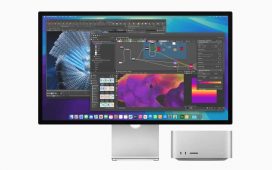The tech industry is buzzing with talk of cloud repatriation, partly due to some articles I have written here. What frustrates me about this industry is the lack of nuance. People make everything seem like drastic shifts.
The last example of this was edge computing. Many articles I read claimed that “the shift is to the edge.” That caused a lot of confusion. Reporters, clients, and students all reached out to ask if the cloud was dead since edge computing now seemed like the way to go.
Of course, that never came true, nor does any extreme shift that the analyst and tech press communities forecast. This industry just does not work that way. In case you haven’t noticed, we move very slowly. Trends don’t emerge overnight; they take years to develop.
Repatriation is just something that happens
Do you get the feeling that enterprises are fleeing the cloud in droves? We’re told that unexpected costs and unfulfilled promises are driving these desertions. Now, I’m not one to dismiss real-world trends, but let’s be clear: This isn’t the death knell of cloud computing. It’s a market correction—a refinement, not a revolution.
In response to the number of people with some vested interest in cloud computing reaching out, concerned that the whole “cloud” thing may disappear, I almost wrote a few quick paragraphs to explain why that was not the case. However, this deserves a more in-depth explanation.
Yes, repatriation is indeed a thing right now. Many enterprises are moving workloads back on premises, but these moves won’t cancel their participation in public clouds. Most public cloud providers are meeting expectations, and most repatriation projects are in response to self-inflicted wounds that occurred during the initial moves to cloud computing.
Citrix tells us that 42% of U.K. companies have repatriated more than half their cloud workloads. That’s a significant percentage, no doubt. But let’s not lose sight of the bigger picture. Cloud adoption is still surging, fueled by the undeniable benefits of agility, scalability, and access to cutting-edge technologies such as generative AI. This repatriation wave is simply a sign of maturity. Companies are getting smarter about the cloud, not abandoning it.
Using our common sense, finally
I could conclude my article with that, and I would have achieved my goal. However, there is more to say about repatriation before we put this silliness behind us.
Think of building a self-sustainable house off the grid. Initially, the design looks bulletproof. Solar panels and windmills collect power, and large batteries store the excess for use when the collection devices are inoperable. However, unforeseen changes in the weather or an increase in the hours of occupancy or number of occupants could cause a power shortage. The solution is to purchase more batteries or have the local power company connect a backup electrical service from your house to their grid. Excess power you collect will be credited to your account, while consumed power will be debited. You still have a mostly sustainable house but have repatriated some of your energy collection and usage to the traditional power grid because it makes the best economic and operational sense.
The same concept applies to cloud repatriation. Businesses realize that a hybrid approach is often the wisest path. Some workloads are more flexible and cheaper to run in their own data centers, a colocation provider, or a managed services provider.
It’s also become apparent that we overlooked common sense too often during the initial mass migration to the cloud. Now, we realize that mission-critical apps, data-intensive workloads, and those with stringent compliance needs might be better served on premises, where control and security are more manageable. However, for many applications, the cloud remains the ideal platform.
Never a binary choice
Repatriation versus cloud isn’t a this-or-that decision, folks. It’s about finding the right tool for the job. Sometimes, the right tool is a mix of cloud and owned hardware, a carefully orchestrated hybrid environment where each workload lives in its optimal environment.
My frustration as a pundit in this industry is that those who follow me often think of new ideas as something to commit their entire company to, even though I’ve never said or implied that. Even the whole AI thing we’re experiencing right now will be a slower adoption process than most think. Don’t worry that you’re the only one on the planet who is not working on a generative AI system. Perception rarely meets reality in technology.
Is cloud repatriation a threat to the cloud’s dominance? Hardly. It’s a sign of a maturing market. Companies are getting more intelligent about leveraging the best of both worlds. The cloud isn’t going anywhere; it’s evolving, becoming more nuanced and integrated into the broader IT landscape. And that, my friends, is a good thing.
Copyright © 2024 IDG Communications, Inc.












